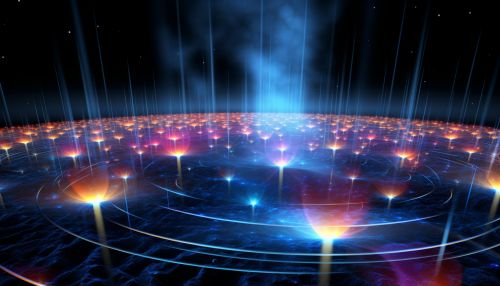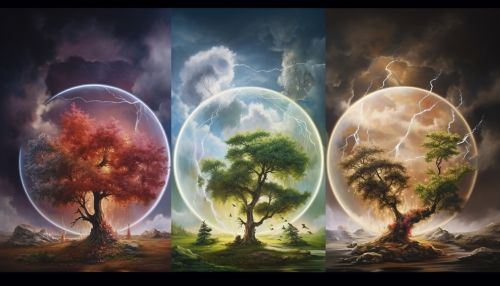The Physics of Quantum Field Theory
Introduction
Quantum Field Theory (QFT) is the theoretical framework for constructing quantum mechanical models of subatomic particles in particle physics and quasiparticles in condensed matter physics. It is a set of principles describing the fundamental forces and forms of matter. QFT combines the principles of classical field theory, quantum mechanics, and special relativity.


Principles of Quantum Field Theory
QFT is built on the principles of quantum mechanics and special relativity. It introduces the concept of fields, which are entities that permeate all of space and time. Particles are then seen as excitations of these fields.
Quantum Mechanics
Quantum mechanics is a fundamental theory in physics that provides a description of the physical properties of nature at the scale of atoms and subatomic particles. It introduces concepts such as wave-particle duality, superposition, and entanglement.
Special Relativity
Special relativity is a theory of the structure of spacetime. It was introduced in Einstein's 1905 paper "On the Electrodynamics of Moving Bodies". Special relativity is based on two postulates which are contradictory in classical mechanics: The laws of physics are the same for all observers in uniform motion relative to one another (principle of relativity), and the speed of light in a vacuum is the same for all observers, regardless of their relative motion or of the motion of the source of the light.
Fields
In QFT, fields are fundamental. They are not a 'condition' in space, but are physical entities in their own right. The field for each type of particle is represented by a different kind of field, and each is listed as a separate entry in the standard model of particle physics.


Quantum Fields and Particles
In QFT, particles are seen as specific states of a field. These states are represented by wavefunctions, which give the probability of finding a particle in a certain state.
Creation and Annihilation Operators
The creation and annihilation operators are mathematical tools used in QFT to describe the creation (or destruction) of particles. The creation operator adds a particle to a given quantum state, while the annihilation operator removes a particle from a state.
Virtual Particles
Virtual particles are a concept in QFT representing temporary fluctuations in energy and momentum. They are not real particles in the traditional sense, but are instead a mathematical tool used to calculate interactions between real particles.


Interactions and Forces
QFT describes how particles interact with each other. These interactions are mediated by other quantum fields, which correspond to force-carrying particles.
Electromagnetic Interactions
The electromagnetic interactions between particles are described by quantum electrodynamics (QED), a theory that describes how light and matter interact. It is a QFT of the electromagnetic force.
Weak Interactions
The weak interactions, also known as weak nuclear force, are one of the four known fundamental interactions of nature, alongside gravity, electromagnetism, and the strong interaction. They are described by the electroweak theory, which is a unified description of two of the four known fundamental interactions of nature: electromagnetism and the weak interaction.
Strong Interactions
The strong interactions, also known as strong nuclear force, are one of the four known fundamental interactions of nature, alongside gravity, electromagnetism, and the weak interaction. They are described by quantum chromodynamics (QCD), a theory that describes the interactions between quarks and gluons, which make up protons, neutrons, and other particles.


Applications and Implications
QFT has many applications in particle physics and condensed matter physics. It has also led to many technological advancements and has philosophical implications.
Particle Physics
QFT is the framework for the standard model of particle physics, which describes the electromagnetic, weak, and strong nuclear interactions.
Condensed Matter Physics
In condensed matter physics, QFT is used to describe and predict phenomena in solid-state physics, superconductivity, and other areas.
Technological Advancements
QFT has led to advancements in technology, such as the development of quantum computers and the prediction of advanced materials with unique properties.
Philosophical Implications
The principles and implications of QFT have been the subject of philosophical debate, particularly in the areas of determinism, realism, and locality.


See Also
- Quantum Mechanics - Special Relativity - Standard Model - Quantum Electrodynamics - Quantum Chromodynamics
